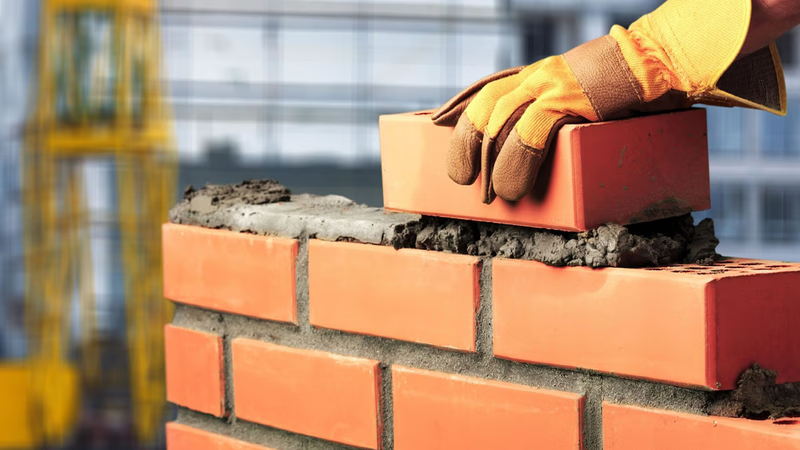
Bricks used in construction showcase durability and aesthetic appeal.
Bricks are extensively used in building construction for both residential and commercial purposes. They are used to construct load-bearing walls, non-load-bearing walls, partitions, and facades. Bricks provide structural strength, stability, and durability to buildings. Bricks are used in the construction of pavements, walkways, and pathways. They create a durable and aesthetically pleasing surface that can withstand pedestrian traffic. Bricks are often employed in the construction of retaining walls, which are structures designed to hold back soil and prevent erosion. Bricks provide stability and strength to these walls, allowing them to withstand the pressure exerted by the soil.
Bricks are used to create various architectural features, such as arches, columns, and decorative elements. They can be arranged in different patterns and textures to add visual interest and enhance the aesthetics of a structure. Bricks are often used in the restoration and renovation of historic buildings. They can be matched to the existing brickwork to maintain the original character and integrity of the structure. Bricks are utilized in landscaping projects to create raised beds, garden walls, and retaining walls. They help define spaces, provide structure, and add a touch of elegance to outdoor areas.
Bricks have also been used as a medium for artistic expression. Artists and sculptors have incorporated bricks into their works to create installations, murals, and sculptures. The most important use of bricks can be considered in the construction and direction of wall construction, where mortar is used to arrange and connect them. Many historical buildings and monuments such as fire temples, mosques and residential buildings are built using bricks in Iran. According to the type and other materials used in it, the types of bricks are also used for other parts of the structures that are being built. In order to understand in which part of the building the brick is used, we must consider the types of bricks of different dimensions and then consider the use of each one in different parts of a building.
Glazed brick has various uses, some of which are:
- Interior and exterior design of building and facade
- Using this brick in tiling
- The cornice of the walls
- Flooring
- Inscriptions around the altar, sedar and dome of mosques
- Tombs and shrines
- Traditional restaurants and hotels
Although today, due to the increase in population density and the construction of multi-story buildings, brick is not used much in the skeleton of buildings and metal or concrete skeletons have replaced it, but brick is still used for facades or other spaces of a building. and it is one of the widely used and widely used building materials. The role of this product in construction goes beyond the exterior of a building and is sometimes used as a suitable substitute for stone in construction projects. Therefore, the use of various types of bricks in construction projects and different parts of a building is always one of the topics of interest to construction industry activists.
Bricks are an ideal material for constructing fireplaces and chimneys due to their ability to withstand high temperatures. The thermal properties of bricks help in retaining heat and preventing the spread of fire. Bricks find applications in the construction of industrial and commercial structures such as warehouses, factories, and office buildings. They offer durability, thermal insulation, and fire resistance, making them suitable for such environments. Bricks are commonly used to build boundary walls and fences around properties. They provide security, privacy, and a solid barrier.
-

Bricks are rectangular blocks used in construction, made primarily from clay or shale. They are known for their durability, thermal insulation, and fire resistance. Various types of bricks exist, including clay, concrete, and fire bricks, each suited for different applications. The brick production process involves mining raw materials, molding them into shape, drying, and firing in kilns to achieve hardness. Despite the rise of alternative materials like concrete blocks and steel frames, bricks remain popular due to their cost-effectiveness and aesthetic appeal. They are widely used in residential and commercial construction for walls, pavements, and decorative elements. Bricks offer advantages such as long lifespan and minimal maintenance but can be heavy and labor-intensive to install. Their versatility allows for various architectural styles while providing good acoustic insulation.
The standard size of a brick varies globally but typically measures around 9 inches long by 4. 5 inches wide by 3 inches thick. Overall, bricks continue to be a fundamental building material with a rich history in construction.
-
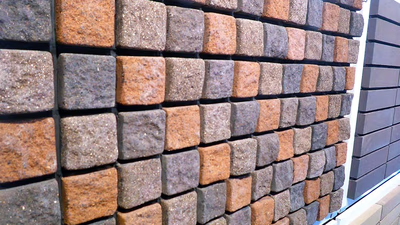
Clay bricks dominate the market due to their versatility and various manufacturing processes. They can be categorized into several types, including dry-pressed, extruded, wire-cut, concrete, sand-lime, perforated, and special-shaped bricks. Each type has unique properties suited for different applications. For instance, dry-pressed bricks offer a smooth texture while extruded bricks are lightweight with improved insulation. Concrete bricks provide higher strength for structural uses, whereas sand-lime bricks excel in moisture resistance. Perforated bricks enhance ventilation and are ideal for damp areas. Special-shaped bricks cater to specific architectural needs. Additionally, bricks can be classified based on quality (first, second, third grade), production methods (extruded, pressed, handmade), materials (clay, shale, concrete), usage (built-in or exposed), application (ordinary or engineering), and appearance (hollow or beveled).
Engineering bricks are particularly strong and suitable for demanding environments like basements and manholes. Fireproof or refractory bricks withstand high temperatures and are essential in fireplaces and kilns. The diversity in brick types allows for a wide range of design possibilities in construction.
-
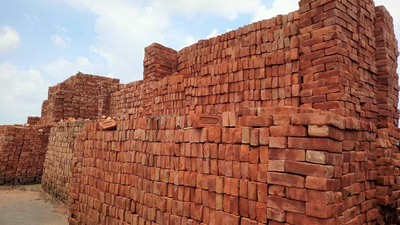
The production of bricks involves several critical steps that influence their quality and price. The process begins with the extraction of raw materials, primarily clay, which is then prepared by removing impurities and adding iron oxide for color. The clay is mixed with water to create a moldable consistency before being shaped through traditional or machine methods. Drying follows, where moisture is gradually removed to prevent cracking. Finally, the bricks are baked in kilns at high temperatures, allowing for crystallization and hardening. Variations in the process can lead to different types of bricks, including glazed options that require an additional surface treatment. Each stage of brick production is essential for ensuring durability and aesthetic appeal, making it crucial for manufacturers to adhere to best practices.
-

Bricks are a fundamental building material used in various construction applications, including residential and commercial structures. They provide essential structural strength, stability, and durability for load-bearing and non-load-bearing walls, pavements, and retaining walls. Their versatility allows for the creation of architectural features like arches and decorative elements, enhancing the aesthetic appeal of buildings. Bricks are also crucial in the restoration of historic structures, ensuring that renovations maintain original character. In landscaping, bricks define spaces through raised beds and garden walls while adding elegance to outdoor areas. Additionally, bricks serve as a medium for artistic expression in installations and sculptures. Despite a shift towards metal or concrete skeletons in modern multi-story buildings, bricks remain popular for facades and other applications due to their durability and thermal properties. They are particularly valued in constructing fireplaces, chimneys, industrial structures, boundary walls, and fences due to their fire resistance and insulation capabilities. The ongoing interest in brick usage reflects its importance within the construction industry.
-
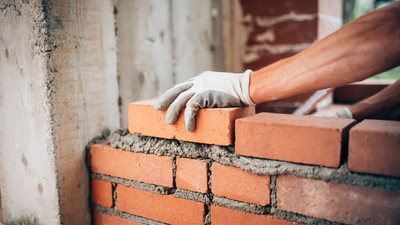
Bricks have a rich history dating back to around 7000 BC in modern-day Turkey and the Middle East. Initially made from sun-dried mud or clay, these early bricks were essential for constructing simple structures. The Mesopotamians advanced brick manufacturing techniques, introducing kiln firing to create stronger bricks, exemplified by the iconic Ishtar Gate in Babylon. Although brick usage declined during the Middle Ages, it saw a revival during the Renaissance, particularly in the Netherlands. The Industrial Revolution further transformed brick production with steam-powered machines and mechanized kilns, leading to standardized sizes and increased output. In Iran, archaeological evidence shows brick kilns dating back over 6000 years. Ancient Egyptians also utilized mud bricks extensively for their monumental constructions, including pyramids. The Romans innovated by using mortar as a bonding agent, enhancing structural stability and leading to widespread use across their empire. Today, while modern materials like concrete and steel have emerged, bricks remain popular due to their durability and aesthetic qualities.
-
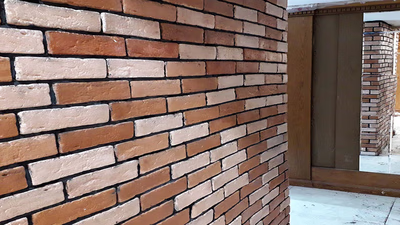
Brick is an environmentally friendly, inorganic material that excels in construction due to its moisture absorption and noise insulation properties. Its energy efficiency is notable, as refractory bricks help maintain indoor temperatures, reducing energy waste. The durability of brick ensures minimal maintenance, as it retains its aesthetic appeal over time without special care. Resistant to deformation from temperature changes and pressure, bricks are suitable for various architectural designs and can support buildings over eight stories. Their fire-resistant nature enhances safety by preventing the spread of flames and toxic gases. Additionally, bricks are versatile in design, available in various colors and styles that cater to different tastes. They can be easily recycled and reused, contributing to sustainability in construction. Overall, the combination of beauty, functionality, and longevity makes brick a preferred choice for modern building facades.






